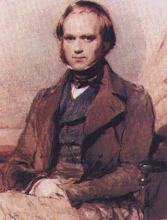
Scientists from Down Under have extracted DNA from feathers of the extinct moa, the 2.5 meter tall birds that dominated New Zealand’s terrestrial ecosystems until the arrival of humans and non-native mammals about 700 years ago.
Previously, DNA had been extracted from the feathers of modern birds and from museum specimens of birds that have gone extinct in historical time, and only from the base or quill end of the feathers.
The moa study showed that viable DNA could be obtained from older, subfossil feathers and from the distal end of the feather, the rachis and barbs. Scientists are not seeking to use the DNA to clone the moa, but to identify the species of moa that they come from.
The success with moa feathers demonstrates that useful information can be obtained from subfossil feathers and from parts of feathers not previously considered useful in genetic analysis.
Reference: Nicolas J. Rawlence, Jamie R. Wood, Kyle N. Armstrong, and Alan Cooper, 2009, DNA content and distribution in ancient feathers and potential to reconstruct the plumage of extinct avian taxa. Proceedings of the Royal Society, B, October 7, 2009 276:3395-3402; published online before print July 1, 2009, doi:10.1098/rspb.2009.0755
Photo credit: Extinct Monsters by Rev. H. N. Hutchinson, illustrations by Joseph Smit (1836-1929) and others. 4th ed., 1896. Plate XXIII between pages 232 and 233.


No comments:
Post a Comment